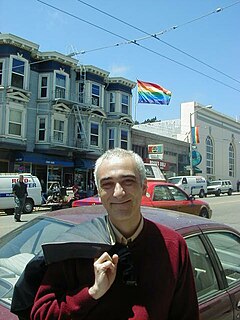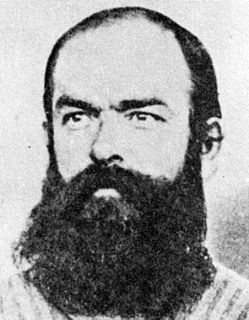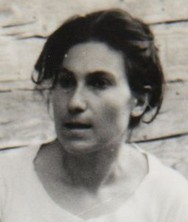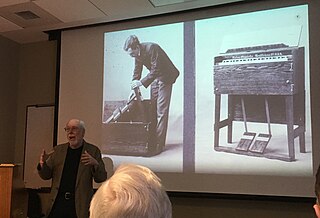 W
WMiguel Vale de Almeida is a Portuguese, anthropologist, LGBT activist, and professor at the Instituto Superior de Ciências do Trabalho e da Empresa (ISCTE) in Lisbon. He is the current editor-in-chief of the journal Etnográfica and member of CEAS-ISCTE and APA. He was Visiting Professor Dept of Anthropology and Latin American Studies’ Center, University of Chicago in the spring of 2006. As a LGBT activist, he is known in Portugal for participating in LGBT rights events, including several appearances on LGBT debates in television.
 W
WFrantišek Bartoš was a Moravian ethnomusicologist, folklorist, folksong collector, and dialectologist. He is viewed as the successor of František Sušil, the pioneer of Moravian ethnomusicology. He notably organized the collecting, categorizing and editing of hundreds of Moravian folksongs which were published is a four volume collection along with about 4000 folksongs from other ethnic traditions. The folksongs appear in ethnographic monographs and the work as a whole is viewed as one of the most important folk song collections ever published. However, Bartoš, like many other early European folk music scholars, sometimes changed the texts of the folk songs, thereby reducing the documentary value of the work.
 W
WAndrei Ivanovich Bogdanov was one of the first Russian bibliographers and ethnographers.
 W
WRobert Henry Codrington was an Anglican priest and anthropologist who made the first study of Melanesian society and culture. His work is still held as a classic of ethnography.
 W
WGeorg Anton Lorenz Diefenbach was a German philologist and lexicographer, as well as a novelist associated with the German Nationalist movement. By career he was a pastor, like his father, and a librarian.
 W
WConstance Goddard DuBois was an American novelist and an ethnographer, writing extensively between 1899 and 1908 about the native peoples and cultures of southern California.
 W
WFrancesco Paolo Frontini was an Italian composer. He studied music with his father, composer Martino Frontini; he also studied the violin with Santi D'Amico, playing a concert with him at the town concert hall at the age of 13. At 15 his first composition, a Qui tollis, was played at the city cathedral, under the direction of Pietro Antonio Coppola. In 1875 Frontini matriculated at the conservatory in Palermo, where he studied with Pietro Platania; from there he passed to the conservatory in Naples, where he received his diploma in composition under the tuition of Lauro Rossi.
 W
WNina Gagen-Torn was a Russian and Soviet poet, writer, historian and ethnographer.
 W
WNarciso Garay Díaz was a Panamanian violinist, composer, and political figure.
 W
WAlbert Samuel Gatschet was a Swiss-American ethnologist who trained as a linguist in the universities of Bern and Berlin. He later moved to the United States and settled there in order to study Native American languages, in which field he was a pioneer.
 W
WAntónio dos Santos Graça (1882—1956) was a Portuguese ethnologist, journalist and politician notable for the study and preservation of Poveiro culture, history, and folklore. He was born and also died at Póvoa de Varzim.
 W
WCésar Guerra-Peixe was a Brazilian violinist, composer, and conductor.
 W
WMarguerite Béclard d'Harcourt was a French composer and ethno-musicologist. She was born in Paris and studied composition at the Schola Cantorum with Abel Decaux, Vincent d'Indy and Maurice Emmanuel.
 W
WJohan Adrian Jacobsen was a Norwegian ethnologist and adventurer. He is mainly known as a collector of ethnographical objects, and a recruiter of indigenous peoples for the ethnographical shows organized by Carl Hagenbeck, founder of Tierpark Hagenbeck, a zoo in Hamburg. Starting in mid-1881, Jacobsen was hired by the Berlin Museum für Völkerkunde to gather ethnographic objects and other specimens. His travels took him from the Arctic to South America, North America, Korea, Japan, Siberia, and the South Sea Islands.
 W
WRayna Katsarova was a Bulgarian ethnomusicologist.
 W
WMongush Borakhovitch Kenin-Lopsan was born on April 10, 1925 at Chash-Tal, Tuva, Chöön-Khemtchik district to a family of Bora-Khöö. Kenin-Lopsan is a writer, poet, historian, archaeologist, famous Tuvan shamanism researcher and leader living in Kyzyl, the capital of Tuva, Russian Federation.
 W
WJohn Stanislaw Kubary, also stated as Jan Stanisław Kubary, Jan Kubary, or Johann Stanislaus Kubary, was a Polish naturalist and ethnographer.
 W
WRicardo Eduardo Latcham Cartwright was an English-Chilean archaeologist, ethnologist, folklore scholar and teacher.
 W
WLeo Levi (1912–1982) was an Italian musicologist
 W
WOrvar Löfgren is a Swedish professor emeritus of ethnology at Lund University in Sweden. Löfgren received his Ph.D. in European ethnology in 1978 for his dissertation, "Maritime hunters in industrial society: the transformation of a Swedish fishing community 1800-1970." He was Professor of European Ethnology at Lund University from 1991 to 2008, and a visiting professor at University of California, Santa Cruz, in 1983, 1986 and 1997.
 W
WEmmanuel Magri was a Maltese ethnographer, archaeologist and writer.
 W
WMarija Makarovič, née Jagodic, is a Slovene ethnologist.
 W
WFaina Petryakova - was a distinguished professor of the Lviv Academy of Arts, a recognized figure in the field of ethnography in Ukraine and beyond, and a senior researcher of the Institute of Ethnography at the Lviv branch office of the National Academy of Sciences of Ukraine.
 W
WGiuseppe Pitrè was an Italian folklorist, medical doctor, professor, and senator for Sicily. As a folklorist he is credited with extending the realm of folklore to include all manifestations of popular life. He is also considered a forerunner in the field of medical history.
 W
WMarie Rouanet is an Occitan singer and writer.
 W
WSergei Ivanovich Rudenko was a prominent Soviet anthropologist and archaeologist who discovered and excavated the most celebrated of Scythian burials, Pazyryk in Siberia.
 W
WIngrid Rüütel is an Estonian folklorist and philologist. From 2001 to 2006 she was the First Lady of Estonia, married to President Arnold Rüütel.
 W
WOtto Schlaginhaufen was a Swiss anthropologist, ethnologist and eugenicist.
 W
WMiloslav Stingl was a Czech ethnologist, traveller and author. He is an expert on Mayan culture and the history of pre-Columbian America.
 W
WOtto Stoll was a Swiss linguist and ethnologist.
 W
WDag Alvar Strömbäck was a Swedish philologist and ethnologist who was a professor at Uppsala University and a specialist in Old Norse studies.
 W
WChuner Mikhailovich Taksami was a Russian ethnographer of Nivkh origin and had a Doctor of Historical Sciences attained in 1955.
 W
WHisao Tanabe was a Japanese musicologist responsible for initiating the study of Asian music in Japan. He was learning the principles of musicology from a French missionary when he began his studies in 1920, researching the musical traditions of the Imperial House of Japan. In April 1921, he visited Korea and played an important role in rescuing the threatened music tradition of the Joseon court. Though the Japanese government had dissolved Korea's Royal Music Institute, forcing it to rely on private sponsorship, he successfully argued that "traditional music and dance like aak will be lost forever if it is not supported" by the Japanese government. He took film and audio recordings, and published a widely circulated report extolling Korea's court music and comparing it to Japanese court practice. Later in 1921, he invented a new type of kokyū for playing high notes.
 W
WErika Taube was a German ethnologist and folklorist. She became known due to her research on the Tuvinians of the Mongolian Altai. She was awarded the Friedrich-Weller-Preis in 1996.
 W
WInija Trinkūnienė is a Lithuanian ethnologist, folklorist, sociologist, psychologist, head of folk music group Kūlgrinda and the high priestess (krivė) of the Romuva community of the old Lithuanian faith. She became the high priestess after the death of the previous high priest (krivis) and her husband Jonas Trinkūnas in 2014. She is a founding member of the European Congress of Ethnic Religions. She holds a master degree in psychology from Vilnius University. She was a featured speaker in the Indigenous Plenary Session at the Parliament of the World Religions in Toronto in 2015.
 W
WDennis Waring is a historian and ethnomusicologist who was the Connecticut State Troubadour from 2003 through 2004. He has authored a book on the history of the Estey Organ Company titled Manufacturing the Muse: Estey Organs & Consumer Culture in Victorian America which was his doctoral dissertation at Weslyan University. He is a local expert on the organs and the role of musical instruments as "primary cultural indicators".
 W
WChristoph Weiditz was a German painter, medalist, sculptor and goldsmith. His artistic development goes from a naïve-German record of the Renaissance influences to a clever mannerism. Christoph Weiditz is one of the four most important German medalist of the Renaissance, alongside Hans Schwarz, Friedrich Hagenauer and Matthes Gebel.